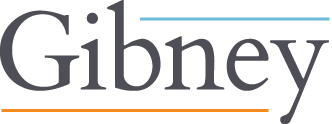President Trump issued a Proclamation Suspending Entry of Immigrants Who Present Risk to the U.S. Labor Market During the Economic Recovery Following the COVID-19 Outbreak. The proclamation is effective 11:59 pm EDT on April 23, 2020 for an initial period of 60 days, and is subject to extension.
The proclamation temporarily suspends the entry of select classes of immigrants currently outside the U.S. seeking to enter the U.S. as permanent residents with a new immigrant visa. Due to consulate closures and COVID-19 travel restrictions already in place, as well as broad categories of exempted immigrants, the immediate impact of the order is limited in scope.
Initially the president intended a more sweeping ban that would have also barred individuals from obtaining temporary work visas, but that proposal was met with fierce resistance from the business community. With respect to temporary workers, the proclamation has no immediate impact but does direct the Department of Labor (DOL) and Department of Homeland Security (DHS) to review nonimmigrant programs in the next 30 days and recommend “other measures appropriate to stimulate the United States economy and ensure the prioritization, hiring, and employment of United States workers.”
Who is impacted by the admission restrictions?
The proclamation only applies to immigrants seeking to enter the U.S. as permanent residents who:
- are outside the United States on the effective date;
- do not have an immigrant visa that is valid on the effective date; and
- do not have another valid official travel document other than an immigrant visa (such as a transportation letter, an appropriate boarding foil, or an advance parole document).
The proclamation does not apply to:
- lawful permanent residents of the United States;
- essential workers and qualifying immediate family members who are determined by the government to be essential to the U.S. COVID-19 response, including: physicians, nurses, health care professionals, researchers and others who perform work essential to combating, recovering from, or otherwise alleviating the effects of the COVID-19 outbreak;
- foreign nationals applying for a visa to enter the United States pursuant to the EB-5 Immigrant Investor Program;
- any foreign national who is the spouse of a United States citizen;
- qualifying children of a U.S. citizen under 21 or qualifying prospective adoptees;
- any foreign national whose entry would further important United States law enforcement objectives, as determined by government and based on the recommendation of the Attorney General’s office;
- members of the United States Armed Forces and their spouses and children;
- qualifying Special Immigrant Visa holders in the SI or SQ classification and their spouses and children;
- individuals whose entry would be in the national interest, as determined by the Secretary of State, the Secretary of Homeland Security, or their respective designees.
The proclamation also does not apply to immigrants seeking asylum or entry on certain humanitarian grounds. Consular officers have discretion to determine who qualifies for an exemption from the order. For additional details regarding qualifying exemptions, please see the full text of the Proclamation.
What is the impact on employers?
As indicated above, the immediate impact of the proclamation is limited by the relatively narrow scope of the covered individuals and travel restrictions already in place due to COVID-19. If the proclamation is extended or expanded, there may be broader impacts and delays in processing of immigrant visas (i.e., green card applications) for foreign national employees applying for permanent residence.
With respect to temporary foreign workers, e.g. nonimmigrants, the proclamation directs DOL and DHS to recommend further measures to “ensure the prioritization, hiring, and employment of United States workers.” The Trump Administration has long sought to limit legal immigration, H-1B visas and other temporary worker programs, in line with its earlier “Buy American, Hire American” executive order and its ensuing highly restrictive policies. Many such proposals face strong resistance from Congress, employers, business groups, universities, and immigration advocates as detrimental to the economy and outside the authority of the President. Executive actions that lack statutory authority or a sufficient nexus to national security are likely to face significant legal challenges. Nonetheless, employers should expect the Administration to advance additional restrictive measures impacting other visa types in the weeks ahead.
Gibney will continue to monitor developments and provide updates as they become available. If you have questions or need specific legal advice, please contact your Gibney representative.

